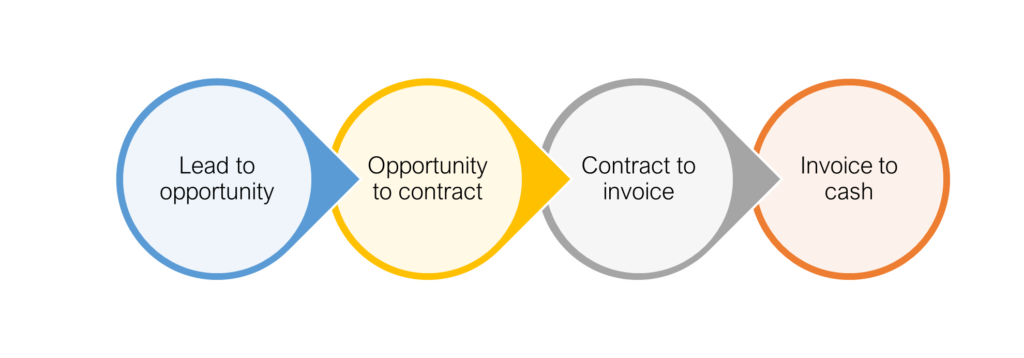Key to Success for Professional Services Organization:
Imagine this.
A professional services company (engineering services, software services, or others) is trying to win a major new client that would boost its sales figures. To win the deal, the sales team agreed to a significant discount—in addition to committing to offer extra help during implementation and a higher-than-normal level of post-implementation support. A couple of months into implementation, it became obvious that the combination of a lower-than-normal fee with a higher-than-usual servicing cost would result in a loss. The pain was compounded when a year later the customer chose not to renew the contract, citing poor service.
Does it ring a bell?
Although the example is fiction, the situation is a familiar one for professional service businesses. Standard solutions are customized for individual customers to compel them to buy. But moving away from the norm makes it complex and expensive to deliver on the promise. To make matters worse, implementing and supporting customized solutions in a way that fits with a company’s existing processes is often impossible.
Then, what is the key to success for professional services organization?
Before understanding the drivers of success, we need to delve deeper into the specific challenges bothering the professional services industry.
It may be worth if we start with an overview of the life cycle of professional services business – commonly known as ‘Opportunity-to-Cash’ or ‘O2C.’ Some organizations also refer to it as ‘Quote-to-Cash.’

Another way to look at the professional services life cycle is to split them as four phases of the quote-to-cash process.

Let us now turn our focus to the challenges faced by professional services organizations.
Key Challenge # 1: Development of the project scope and the quote
In most professional services organizations, the sales teams go after every potential customer by trying to customize offers – leading to non-standardized scope and quote development. Such a please-all-customer approach results in:
- A lack of standard process for proposal-making
- Ad hoc Master Cost profiles
- Inaccurate and ineffective methods to incorporate costs, inflations, and margins.
- Inability to consider multiple project geographies.
Key Challenge # 2: Lack of fit-to-purpose template approach
Professional Services cuts across a broad spectrum of diverse projects that vary in value, complexity, life cycle, and project management approaches (predictive, agile, hybrid, etc.) Organizations very rarely realize these project dimensions and prefer to go by their comfort zone – choosing a ‘one-size-fits-all’ approach. Organizations later struggle with inefficiencies of project planning and execution as teams spend similar effort on small, medium, and large projects.
Key Challenge # 3: Inefficient resource management
Business problems do not come alone – they always show up in a chain. When solutions are created to please every potential customer, the immediate impact would be a poor mapping of business demand and resource capacity. Besides, use of Spreadsheets and Emails complicates it further, leading to:
- Ineffective resource allocation
- Inefficient resource utilization
- Higher resource costs and thus reduced profitability.
Key Challenge # 4: Disconnected project management delivery
Project delivery is a critical piece of the professional services puzzle. It is very common to hear leaders becoming frustrated at disjointed approach by their teams during project planning and delivery across all the relevant functional areas of the project. The project teams tend to operate from their own ‘functional islands’ – leading to client dissatisfaction.
Key Challenge # 5: Tracking project profitability and cashflow
The culmination of the earlier challenges is project profitability and cashflow. When plans are not holistic and thorough, resources poorly managed, inefficient process templates, and teams unable to collaborate, the project along with its business case is rendered irrelevant. The situation gets further aggravated by too many ‘change orders’ – thanks to ‘bespoke’ solutions sold to win the deals. The finance teams invariably find it overwhelming to track customer change orders, additional effort, and additional fees to be collected. Further, it has a significant negative impact on operating cashflows. It is common to hear business leaders complaining of missed revenue recognition and revenue leakages. In the face of today’s competition, it does not take rocket-science to visualize the impact of lost revenue on both cashflow and profitability.
When the organization is operating as functional islands, leaders should not be surprised by ‘project chaos!’
So, what are the levers of success for professional services organizations?
It is high time that business leaders realize that their teams must not be managing professional services projects on standalone spreadsheets, documents, and email. Enterprises must look to build a culture of project management across the organizational hierarchy – a software solution that is designed to the specifics of the professional services business must be the starting point. Such solutions go by different names in the industry – PSA Software or Professional Services Automation Software or a simple project management software.
Irrespective of the name, let us look at what organizations need from such software.
While there could be many minute features and functionalities, let us identify the non-negotiable ones.
Capability # 1: An end-to-end solution.
Organizations need a holistic PSA Software that include the business needs of workflows design, opportunity identification, opportunity evaluation, proposal building, and contract creation. Further, the solution must move seamlessly to project planning to execution and closure by addressing scheduling, resourcing, costs, risks, issues, meetings, collaboration, analytics, and mobile access. In short, the professional services automation software must deliver visible customer value at every stage of the business.
Capability # 2: Configured for professional services industry.
Gone are the days of generic software such as Excel and Word. Leaders need project management software that is configured to the life cycle needs of professional services businesses as well as the organizational standards, processes, workflows, templates, checklists, and dashboards. If the PSA software needs data extraction, conversion, or any copy/paste job, the result is – inefficiency! The chosen solution must minimize the need for any customization. Period.
Capability # 3: Support portfolio-level consolidation
The chosen PSA software must be able to roll-up projects and programs to the business unit level or portfolios. Senior leaders or portfolio managers must be empowered the software to take decisions – swiftly and rigorously.
Capability # 4: Ease of use powered by advanced UI/UX.
The design strategy of PSA software must be centred around its users. The software product configuration must be driven by superior User Interface and a great User Experience. A best-in-class UI/UX fosters product adoption by users, thereby accelerating customer value delivery.
Capability # 5: State-of-the-art technology.
The PSA software must be built on a state-of-the-art technology stack that ensures security, performance, and scalability yet optimizing on hardware costs.
Capability # 6: Flawless implementation.
Numerous software has failed to deliver value because of poorly managed implementation. It is critical that the team behind PSA solution implementation has the twin competencies of professional services domain expertise and product implementation – while supporting management of change for the customer!
In additional to the above, organizations must choose a solution that offers the ‘best Value-to-Cost Ratio.’
At ProductDossier, the leadership team visualized the need for such solutions – the result is TouchBase, an industry leading software that is uniquely designed to the needs of the professional services industry.
Give TouchBase a look, you would be pleased!





